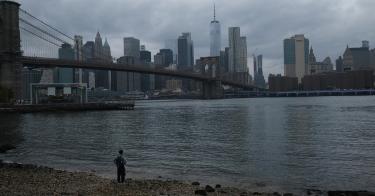The prevailing narrative about the COVID-19 pandemic is that New York and the Northeast were especially hard hit during the spring, but that lockdown orders and diligent social distancing subdued the contagion.
Then—so the story goes—much of the rest of the country, especially in the South, supposedly relaxed lockdown orders too soon, leading to uncontrolled outbreaks throughout the region, comparable to what occurred in New York. The implication: Americans should still fear venturing out of lockdown.
White House coronavirus task force chief Dr. Deborah Birx recently summarized this narrative: “I just want to make it clear to the American public,” she proclaimed, “what we have right now are essentially three New Yorks,” referring to Florida, Texas, and California.
A closer look at the data reveals that when it comes to COVID-19, there is only one New York.
>>> Read the report
Despite the increase in cases throughout the South and West during the summer months, the New York City metropolitan statistical area (MSA), consisting of the city itself and surrounding counties, had a population-adjusted confirmed case rate that is 36% higher than the rest of the nation as of Sept. 27.
Its COVID-19 death rate per million residents is more than quadruple that of the rest of the country and nearly twice that of its nearest rival, Detroit. The New York City MSA’s death rate is more than double that of Miami, triple that of Phoenix, and more than four times that of Houston—three cities that saw substantial increases in cases during the summer.
New York City, where the coronavirus established an early beachhead and from there metastasized to every corner of the nation, stands virtually alone in terms of severe morbidity and mortality associated with the coronavirus, casting doubt on the effectiveness of its lockdown policy.
Moreover, recent studies, including one by a former Obama administration economic adviser, call into question widely held views on the value of government lockdowns.
Austan Goolsbee, who headed former President Barack Obama’s Council of Economic Advisers, and Chad Syverson of the University of Chicago found that the issuance and withdrawal of lockdown orders has only a marginal effect on people’s decisions to frequent public places.
They concluded that “individual choices were far more important and seem tied to fears of infection” than the lockdown orders themselves.
A more recent study by three Canadian economists reached a similar conclusion, noting that people with the option to work remotely continued to do so even after government lockdown orders permitted them to return to their offices.
People, not government lockdown orders, determine the level of social interactions that facilitate COVID-19 spread.
That is certainly true of New York City. Hundreds of thousands of wealthy New Yorkers decamped to second homes. An estimated 420,000 residents fled the city between March 1 and May 1, reducing the population of affluent neighborhoods by at least 40%.
People with well-paying jobs who were able to work remotely were most likely to leave and, if they lived outside the city, to avoid commuting there. That pattern persists today, more than three months after Gov. Andrew Cuomo permitted offices to reopen.
Lower-income residents, lacking that luxury, were confined by government lockdowns. Many lived in multi-generational households in multi-family units, where the disease more easily spread. An estimated 66% of New Yorkers hospitalized with COVID-19-related illnesses were infected in their homes.
These residents, disproportionately members of racial minority groups, suffered the worst consequences of the pandemic, exacerbating economic and racial disparities in a city where those disparities already were pronounced.
New York’s COVID-19 death rate, which stands alone despite this summer’s outbreaks, offers a cautionary tale about the value of lockdowns.
This piece originally appeared in The Washington Times



